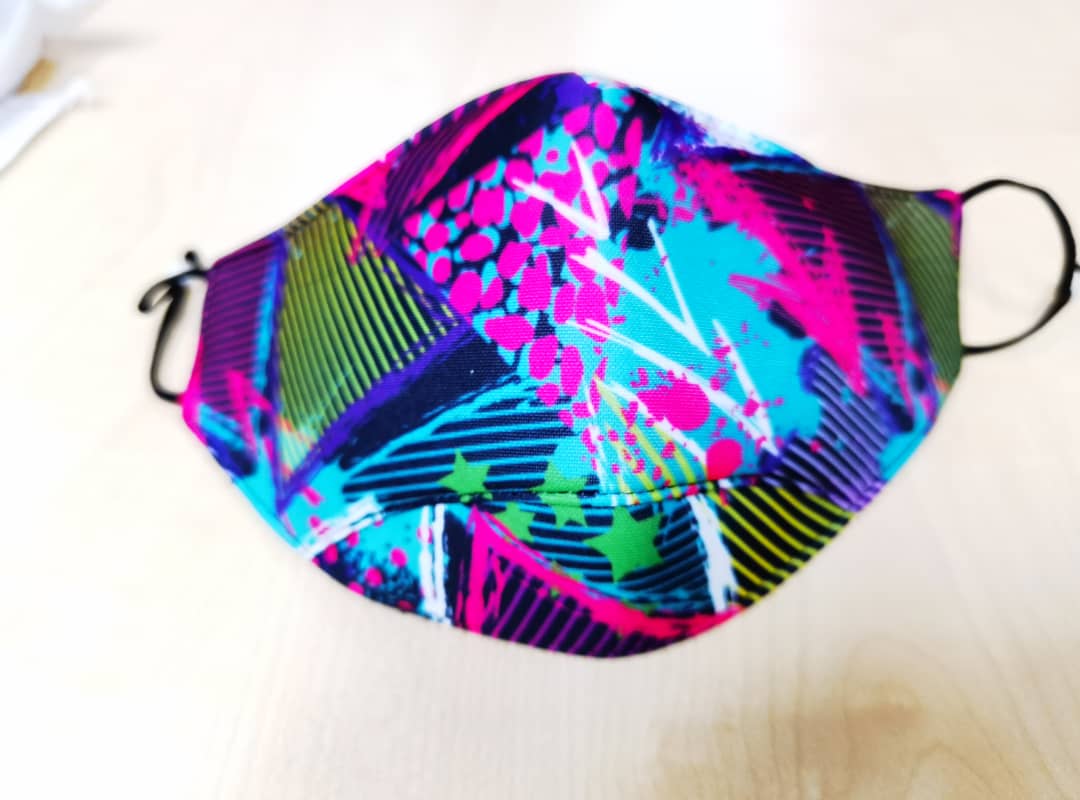Berita
Short Knowledge on Denim Fabric
Dec 21, 2023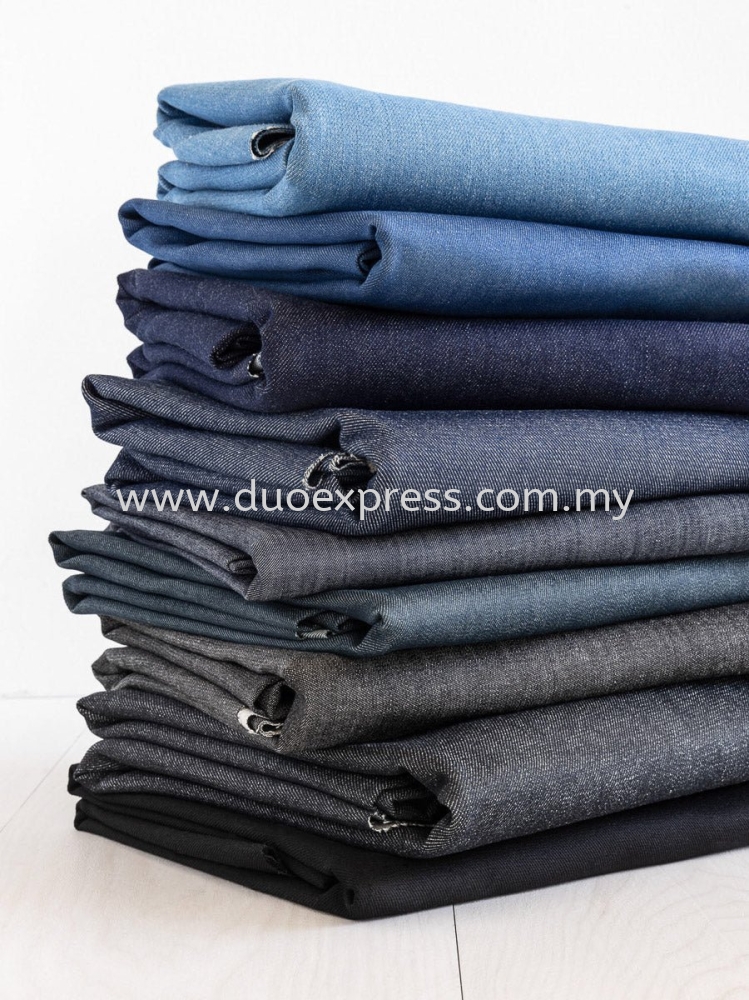
To find items or attire using Denim Fabric such as Denim Apron / Denim Long Sleeve Shirts / Denim Short Sleeve Shirts and others, Please call for more inquiry: -
Awesome Wong - 012-777 8557
Whatsapp: https://wa.me/60127778557
Email: aweduoexpress@gmail.com
Supplies low, frontliners buy PPE with own funds, says Sabah health worker
Nov 2, 2020
source :
https://www.freemalaysiatoday.com/category/nation/2020/11/02/supplies-low-frontliners-buy-ppe-with-own-funds-says-sabah-health-worker/
For any PPE enquiry
www.duoexpress.com.my
https://wa.me/60127772373 atau email veryduoexpress@gmail.com
Isolation Gown - COVID-19.
Mar 24, 2020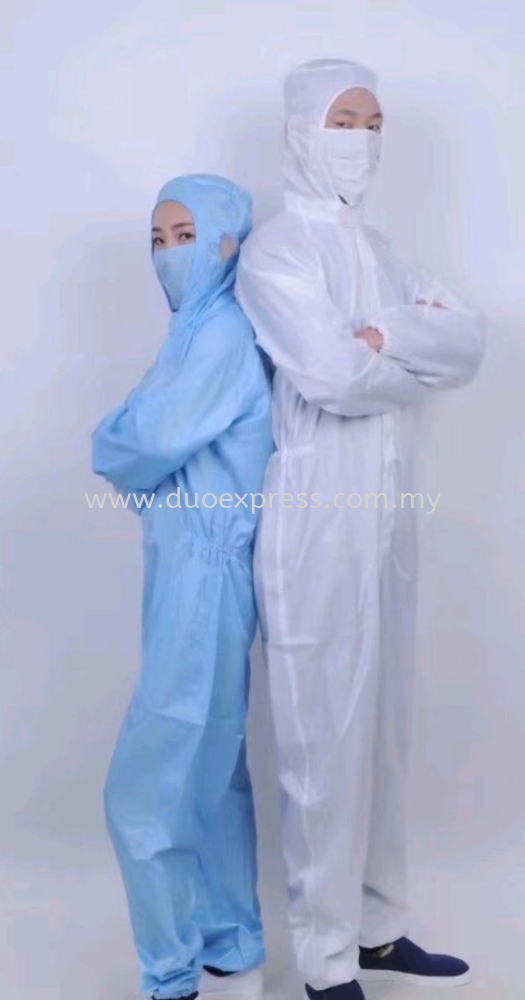
https://www.cdc.gov/coronavirus/2019-ncov/hcp/ppe-strategy/isolation-gowns.html
Audience: These considerations are intended for use by federal, state, and local public health officials; leaders in occupational health services and infection prevention and control programs; and other leaders in healthcare settings who are responsible for developing and implementing policies and procedures for preventing pathogen transmission in healthcare settings.
Purpose: This document offers a series of strategies or options to optimize supplies of isolation gowns in healthcare settings when there is limited supply. It does not address other aspects of pandemic planning; for those, healthcare facilities can refer to COVID-19 preparedness plans.
Surge capacity refers to the ability to manage a sudden, unexpected increase in patient volume that would otherwise severely challenge or exceed the present capacity of a facility. While there are no widely accepted measurements or triggers to distinguish surge capacity from daily patient care capacity, surge capacity is a useful framework to approach a decreased supply of isolation gowns during the COVID-19 response. Three general strata have been used to describe surge capacity and can be used to prioritize measures to conserve isolation gown supplies along the continuum of care.
- Conventional capacity: measures consist of providing patient care without any change in daily contemporary practices. This set of measures, consisting of engineering, administrative, and personal protective equipment (PPE) controls should already be implemented in general infection prevention and control plans in healthcare settings.
- Contingency capacity: measures may change daily standard practices but may not have any significant impact on the care delivered to the patient or the safety of healthcare personnel (HCP). These practices may be used temporarily during periods of expected isolation gown shortages.
- Crisis capacity: strategies that are not commensurate with standard U.S. standards of care. These measures, or a combination of these measures, may need to be considered during periods of known isolation gown shortages.
The following contingency and crisis strategies are based upon these assumptions:
- Facilities understand their current isolation gown inventory and supply chain
- Facilities understand their isolation gown utilization rate
- Facilities are in communication with local healthcare coalitions, federal, state, and local public health partners (e.g., public health emergency preparedness and response staff) regarding identification of additional supplies
- Facilities have already implemented other engineering and administrative control measures including:
- Reducing the number of patients going to the hospital or outpatient settings
- Excluding HCP not directly involved in patient care
- Reducing face-to-face HCP encounters with patients
- Excluding visitors to patients with confirmed or suspected COVID-19
- Cohorting patients and HCP
- Maximizing use of telemedicine
- Facilities have provided HCP with required education and training, including having them demonstrate competency with donning and doffing, with any PPE ensemble that is used to perform job responsibilities, such as provision of patient care
Conventional Capacity Strategies
Use isolation gown alternatives that offer equivalent or higher protection.
Several fluid-resistant and impermeable protective clothing options are available in the marketplace for HCP. These include isolation gowns and surgical gowns. When selecting the most appropriate protective clothing, employers should consider all of the available information on recommended protective clothing, including the potential limitations. Nonsterile, disposable patient isolation gowns, which are used for routine patient care in healthcare settings, are appropriate for use by HCP when caring for patients with suspected or confirmed COVID-19. In times of gown shortages, surgical gowns should be prioritized for surgical and other sterile procedures. Current U.S. guidelines do not require use of gowns that conform to any standards.
Contingency Capacity Strategies
Selectively cancel elective and non-urgent procedures and appointments for which a gown is typically used by HCP.
Shift gown use towards cloth isolation gowns.
Reusable (i.e., washable) gowns are typically made of polyester or polyester-cotton fabrics. Gowns made of these fabrics can be safely laundered according to routine procedures and reused. Care should be taken to ensure that HCP do not touch outer surfaces of the gown during care.
- Laundry operations and personnel may need to be augmented to facilitate additional washing loads and cycles
- Systems are established to routinely inspect, maintain (e.g., mend a small hole in a gown, replace missing fastening ties), and replace reusable gowns when needed (e.g., when they are thin or ripped)
Consider the use of coveralls.
Coveralls typically provide 360-degree protection because they are designed to cover the whole body, including the back and lower legs, and sometimes the head and feet as well. While the material and seam barrier properties are essential for defining the protective level, the coverage provided by the material used in the garment design, as well as certain features including closures, will greatly affect the protective level. HCP unfamiliar with the use of coveralls must be trained and practiced in their use, prior to using during patient care.
In the United States, the NFPA 1999 standard specifies the minimum design, performance, testing, documentation, and certification requirements for new single-use and new multiple-use emergency medical operations protective clothing, including coveralls for HCP.
Use of expired gowns beyond the manufacturer-designated shelf life for training.
The majority of isolation gowns do not have a manufacturer-designated shelf life. However, consideration can be made to using gowns that do and are past their manufacturer-designated shelf life. If there is no date available on the gown label or packaging, facilities should contact the manufacturer.
Use gowns or coveralls conforming to international standards.
Current guidelines do not require use of gowns that conform to any standards. In times of shortages, healthcare facilities can consider using international gowns and coveralls. Gowns and coveralls that conform to international standards, including with EN 13795 and EN14126, could be reserved for activities that may involve moderate to high amounts of body fluids.
Crisis Capacity Strategies
Cancel all elective and non-urgent procedures and appointments for which a gown is typically used by HCP.
Extended use of isolation gowns.
Consideration can be made to extend the use of isolation gowns (disposable or cloth) such that the same gown is worn by the same HCP when interacting with more than one patient known to be infected with the same infectious disease when these patients housed in the same location (i.e., COVID-19 patients residing in an isolation cohort). This can be considered only if there are no additional co-infectious diagnoses transmitted by contact (such as Clostridioides difficile) among patients. If the gown becomes visibly soiled, it must be removed and discarded as per usual practices.
Re-use of cloth isolation gowns.
Disposable gowns are not typically amenable to being doffed and re-used because the ties and fasteners typically break during doffing. Cloth isolation gowns could potentially be untied and retied and could be considered for re-use without laundering in between.
In a situation where the gown is being used as part of standard precautions to protect HCP from a splash, the risk of re-using a non-visibly soiled cloth isolation gown may be lower. However, for care of patients with suspected or confirmed COVID-19, HCP risk from re-use of cloth isolation gowns without laundering among (1) single HCP caring for multiple patients using one gown or (2) among multiple HCP sharing one gown is unclear. The goal of this strategy is to minimize exposures to HCP and not necessarily prevent transmission between patients. Any gown that becomes visibly soiled during patient care should be disposed of and cleaned.
Prioritize gowns.
Gowns should be prioritized for the following activities:
- During care activities where splashes and sprays are anticipated, which typically includes aerosol generating procedures
- During the following high-contact patient care activities that provide opportunities for transfer of pathogens to the hands and clothing of healthcare providers, such as:
- Dressing, bathing/showering, transferring, providing hygiene, changing linens, changing briefs or assisting with toileting, device care or use, wound care
Surgical gowns should be prioritized for surgical and other sterile procedures. Facilities may consider suspending use of gowns for endemic multidrug resistant organisms (e.g., MRSA, VRE, ESBL-producing organisms).
When No Gowns Are Available
Consider using gown alternatives that have not been evaluated as effective.
In situation of severely limited or no available isolation gowns, the following pieces of clothing can be considered as a last resort for care of COVID-19 patients as single use. However, none of these options can be considered PPE, since their capability to protect HCP is unknown. Preferable features include long sleeves and closures (snaps, buttons) that can be fastened and secured.
- Disposable laboratory coats
- Reusable (washable) patient gowns
- Reusable (washable) laboratory coats
- Disposable aprons
- Combinations of clothing: Combinations of pieces of clothing can be considered for activities that may involve body fluids and when there are no gowns available:
- Long sleeve aprons in combination with long sleeve patient gowns or laboratory coats
- Open back gowns with long sleeve patient gowns or laboratory coats
- Sleeve covers in combination with aprons and long sleeve patient gowns or laboratory coats
Reusable patient gowns and lab coats can be safely laundered according to routine procedures.
- Laundry operations and personnel may need to be augmented to facilitate additional washing loads and cycles
- Systems are established to routinely inspect, maintain (e.g., mend a small hole in a gown, replace missing fastening ties) and replace reusable gowns when needed (e.g., when they are thin or ripped)
Initiative to use biodegradable products in Malaysia
Feb 25, 2020
Ban against plastic straws included as criteria to licensing requirements for businesses
PETALING JAYA: KUALA Lumpur City Hall (DBKL) has added several criteria to its licensing requirements for businesses, aimed at making Kuala Lumpur a plastic-free city.
DBKL said in a statement on Friday (Feb 21) that the new criteria includes the ban on polystyrene and one-time-use plastic products.
This is to be replaced with biodegradable and compostable products.
Operators can also charge 20 sen on biodegradable packaging that has Sirim's Eco-001:2018 or Sirim Eco-009:2016 classification.
Meanwhile, plastic straws are totally banned.
Licensed operators who refuse to use biodegradable products and continue to use plastic straws will be fined or risked having their licences revoked.
DBKL said that action can be taken against offenders under the Local Government Act or Federal Territories of Kuala Lumpur or Licensing Of Hawkers (Federal Territory Of Kuala Lumpur) By-laws 2016, Trade, Business and Industrial Licensing (Federal Territory Of Kuala Lumpur) By-laws 2016 and Licensing of Food Establishment (Federal Territory Of Kuala Lumpur) By-laws 2016.
''Operators who fail to adhere to the by-laws will be issued a compound of RM1,000 or have their deposits forfeited.
''They can also be fined not more than RM2,000 or jailed not more than one year and have their licences revoked,'' it said.
The initiative to use biodegradable products was started on Jan 1,2017, while the ban on plastic straws was implemented on Jan 1 this year.
https://www.thestar.com.my/metro/metro-news/2020/02/21/ban-against-plastic-straws-included-as-criteria-to-licensing-requirements-for-businesses

Baseball Team Jersey
Jan 29, 2019

Custom attire?
People are more likely to hold onto clothing when it has sentimental value, and custom jerseys from old sports teams are both personal and sentimental. Customized jerseys are a nice souvenir for team members and, since they are likely to hold onto the jerseys as mementos, this prolongs the brand visibilitywho doesn’t love custom attire?
Fire Retardant Coverall - NOMEX IIIA
Jan 22, 2019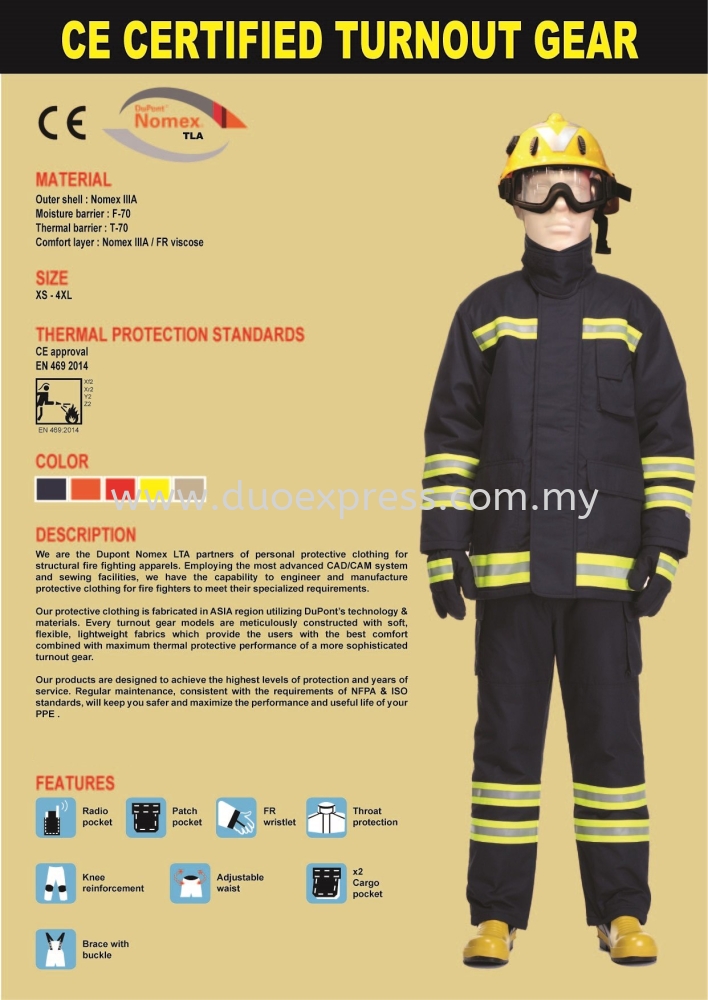
Why Fire retardant Overall from NOMEX III A

The Leader in Flame-Resistant Protection
For more than 30 years, protective apparel made from DuPont™ NOMEX® brand fiber has provided superior thermal protection from flames, flash fires and electric arcs. The unique molecular structure of NOMEX® makes it inherently flame resistant. Garments of NOMEX® protect workers in the petroleum, petrochemical, chemical, and electric and gas utility industries. Professional firefighters, racecar drivers, U.S. military personnel and NASA astronauts also wear garments of NOMEX®.
Unmatched Thermal Performance
The effectiveness of NOMEX® has been proven and documented in laboratories, field tests and real-life flash fire and electric arc situations. Garments of NOMEX® consistently provide outstanding thermal performance because NOMEX® IIIA:
- Is inherently flame resistant.
- Inherent thermal protection that cannot be washed away.
- Durable and resistant to abrasion, tears, and chemicals.
- Does not burn or melt and drip.
- Provides permanent protection that won’t wash out or wear away.
- Minimizes break-open and maintains a stable, inert barrier between the fire/arc and skin, protecting the wearer from direct exposure.
- Forms a tough, protective char when exposed to flame, and stays supple until it cools.
- Meets the NFPA 1975 for firefighters’ stationwear.
- Meets the ASTM F1506 standard for workers’ apparel as protection from electric arc exposure.
- Complies with NFPA 70E Standard for Electrical Safety in the Workplace
- Complies with NFPA 2112 Standard on Flame-Resistant Garments for Protection of Industrial Personnel Against Flash Fire
- Widely used by petroleum, petrochemical, chemical, and utility industries, as well as firefighters.
Durability and Cost Effectiveness
Garments made with NOMEX® thermal technology are extremely durable and resist abrasion, tears and chemicals. They’re also an excellent value, lasting three to five times longer than other standard and protective fabrics, including 100% cotton and flame-retardant treated (FRT) cotton. In lease, rental and purchase programs, the out-standing wear life of garments of NOMEX® IIIA can contribute to bottom-line savings.
Anti-Static Performance
Workers must be constantly aware of static electricity hazards and must use proper grounding procedures, both for themselves and equipment. As an added margin of safety, garments of DuPont™ NOMEX® IIIA reduce the clothing’s contribution to static charge buildup on the body. NOMEX® IIIA is made with a static-dissipative fiber, which reduces the static generated in both fabric-to-fabric and fabric-to-surface rubbing, even in low humidities. NOMEX® IIIA also reduces static cling, which makes the garment more comfortable to wear.
Lightweight Comfort
Garments of NOMEX® are as comfortable to wear as other work clothing. Lightweight, breathable fabrics of NOMEX® brand fiber are designed to transport moisture away from the skin, which helps wearers feel cool and dry. Side-by-side wear tests show that fabric weight is the single greatest factor in controlling garment comfort, and that the lightweight comfort fo NOMEX® is often preferred over other protective fabrics. In addition, protection apparel of NOMEX® is available in a variety of fabric weights to suit any climate.
Professional Appearance
Flame-resistant protective apparel of NOMEX® combines style and functionality with a professional appearance. NOMEX® is available in a wide range of colors and garment styles, including jackets, parkas, slacks, jeans, shirts, polar fleece and switching coats.
Easy Care
Garments of NOMEX® are easy to launder and rarely need pressing. Normal home or commercial laundering and dry cleaning techniques provide good results. The protection is permanent and cannot be washed out or worn away.
Nomex®
by Chris Woodford. Last updated: May 7, 2018.
It's a racing driver's worst nightmare. You come down the straight at over 200mph (300 kph), a tire blows out, and you skid off into the crash barrier. You survive the crash but the energy of the impact generates enough heat to make your fuel tank explode. Suddenly, the car that could have carried you to victory has turned into a fireball. You manage to escape, but now there's another terrifying threat: your overalls catch fire! Fortunately, you're wearing an inner body-suit made of an amazing flame-resistant material called Nomex®. So, as you pelt from the car, the fire goes out all by itself. Shaken but unharmed, you owe your life to an piece of amazing chemical technology. Let's take a closer look at how Nomex works and some of the other things it can be used for!
Photo: A soldier puts on a Nomex® hood and a flameproof suit. Photo by Ryan C. Matson courtesy of US Army.
What is Nomex?

Artwork: The chemical structure of Nomex. It's a polymer built by repeating this ring-based unit (monomer) over and over again.
Nomex® is the brand name for a heat- and flame-resistant textile made by the DuPont™ chemical company. Technically, it's called a synthetic aromatic polyamide polymer (and, in the original Nomex patent, it's referred to as a 'polycarbonamide'), but let's not get bogged down with jargon . What does that really mean:
- Synthetic means made in a chemistry lab. Synthetic textiles (such as polyester, nylon, and so on) are artificial, human-made chemicals cooked up by chemists; they're the opposite of natural fibers such as wool (from animals) and cotton (from plants).
- Aromatic means the molecules in nomex are based on connected rings of atoms rather than straight-line branched structures.
- Polyamide means lots of molecules are connected together into chains. In chemistry, 'poly' really just means 'many,' so polyamide means 'many amide.'
- Polymer is the proper chemical term for a plastic. It usually means a giant molecule made from many ('poly-') repetitions of a basic unit called a monomer ('-mer').
In short, what we have in Nomex is a man-made textile whose ring-like monomers are bonded together into tough, long chains to make immensely strong fibers. Break Nomex up and sort it into its atoms and you'd have four neat piles of carbon hydrogen, oxygen, and nitrogen.

Photo: A pair of Nomex® gloves like these could make nasty oven burns a thing of the past.
Aromatic polyamides such as Nomex are often called aramids for short. Kevlar® (another DuPont textile) is also an aramid, but with a slightly different chemical structure. If you're interested, the full chemical name of Nomex is poly (m-phenylenediamine isophthalamide), while Kevlar is poly (p-phenylenediamine terephthalamide); Nomex is a meta-aramid polymer while Kevlar is a para-aramid polymer.
Aramids are made in a two-stage process. First, the basic polymer is made by reacting together organic (carbon-based) substances to form a liquid. In the second stage, the liquid is spun out to make solid fibers, which can then be woven into textiles or converted into sheet form.
Nomex generally comes in three kinds. It's either used by itself (as 100 percent Nomex), blended with up to 60 percent Kevlar, or blended with Kevlar and some anti-static fibers. In this last form, it's known as Nomex III.

Photo: Left: Turn Nomex gloves inside out and you can see how very thickly woven they are. Although they look much like ordinary woollen gloves, wool alone could never give such amazing heat protection. Right: Inspect the label carefully and you'll see this is actually Nomex III, which is roughly 95 percent Nomex, 5 percent Kevlar, and a little carbon fiber to reduce static.
What makes Nomex fireproof?
Two superb properties of Nomex make it a perfect protective material for race-car drivers. Although Nomex burns when you hold a flame up to it, it stops burning as soon as the heat source is removed. In other words, it is inherently flame resistant. Just as important, the thick woven structure of synthetic fibers is a very poor conductor of heat. It takes time for heat to travel through Nomex; hopefully by that time, you're away from the flames and out of danger. In the original Nomex patent, five samples of the material were compared with five similar samples of cotton (the control) in a basic flame test. The cotton samples caught fire in just 2 seconds and burned for 13–430 seconds; the Nomex ignited much more slowly (after about 4 seconds) and stopped burning after a mere 5 seconds when the flame was removed.
Apart from high heat resistance and flame retardance (it doesn't melt or drip), the tough, woven structure of Nomex is extremely strong and doesn't react with water.
What is Nomex used for?

Photo: Ready for battle: soldiers put on body armor made from Kevlar and Nomex and used by explosives experts. Photo by courtesy of US Army.
Nomex is best known as a barrier to fire and heat. Apart from race-car drivers, it's worn by astronauts, fire-fighters, and military personnel. It's also widely used in more mundane ways, such as in my household oven gloves. In sheet form, heatproof Nomex finds many uses in automobiles, including high-temperature hoses and insulation for spark plugs.
But Nomex isn't just useful for protective clothing. The molecular structure that stops heat passing through stops electricity flowing through it as well. That means Nomex is an extremely poor conductor—almost a perfect insulator, in fact. Nomex, made into the form of a paper sheet or board, is a superb insulating material for all kinds of electrical equipment, from motors and generators to transformers and other electrical equipment. For these applications, Nomex is often laminated with Mylar® (polyester film) to make a stronger, tougher insulating material that works at high temperatures without the individual layers coming apart. Two-ply Nomex-Mylar laminate is called NM; three-ply is known as NMN (where the Nomex goes either side of the Mylar); and four ply is NMNM.
Like Kevlar, Nomex is both very strong and very light, so it's often used in aerospace applications. Nomex sheet is widely used to make the honeycomb reinforcement inside helicopter blades and airplane tail fins.

Photo: Nomex isn't the only fire-retardant fabric. Textiles used to cover chairs are often made from fire-resistant polyesters and other materials. This simple demonstration in Think Tank (the science museum in Birmingham, England) shows very clearly how fabrics like these can save lives. On the left, we have a chair made from ordinary fabric. A cigarette or match burn sets the fabric alight very quickly and gives off toxic fumes. Had this fire been left to burn, the whole chair (and the rest of the room) would have been completely destroyed. On the right, a chair made from fire-retardant fabric burns much slower. Often the fire goes out before too much damage is done.
Who invented Nomex?
The credit for this excellent invention goes to Dr Wilfred Sweeny (1926–2011), a Scottish-born scientist working at the world-famous DuPont laboratory in Wilmington, Delaware that also spawned nylon and Kevlar. While researching polymers, he developed one with with particularly good thermal properties that could be woven into a very tough fiber. Since Nomex was introduced in 1967, it has saved the lives of countless firefighters, pilots, soldiers, industrial workers—and, of course, racing drivers!
What Are the Benefits of Personalized Sports Jersey?
Jul 13, 2018
Apakah Faedah memiliki Jersi Sukan Peribadi?
Pelanggan yang paling memahami adalah mereka dalam bidang sukan. Pasukan memerlukan sesuatu untuk dipakai yang akan mewakili mereka dengan baik, dan pakaian sukan yang diperibadikan pasti akan berjaya! Selain mengikuti penampilan, ada lebih banyak pakaian sukan yang diperibadikan daripada yang kelihatan. Berikut adalah beberapa kelebihan jersi yang diperibadikan dan sebab mengapa pakaian berpasukan yang disesuaikan ini adalah suatu keharusan:
Keseragaman - Daripada hanya memakai baju berwarna biasa atau pakaian sukan yang tidak mempunyai apa-apa yang dicetak pada mereka; menyesuaikan jersi khas untuk pasukan anda boleh menghasilkan keseragaman pasukan. Sudah tentu, memakai kemeja dengan warna atau gaya yang sama membuat pasukan kelihatan lebih seragam, tetapi dengan logo dan butiran pasukannya, jersi akan kelihatan lebih rasmi. Tampilan keseluruhan yang bersih dan seragam menambah sentuhan profesionalisme bagaimana pasukan mewakili diri mereka sendiri.
Team Unity - Apabila ahli pasukan memakai pakaian seragam atau jersi pasukan, mereka berasa lebih berhubung dengan pasukan yang lain. Memakai sesuatu yang mereka tahu mewakili keseluruhan pasukan dan bukan hanya diri mereka sendiri sebagai individu pasti dapat membuat mereka bertindak dengan sewajarnya. Ini membantu menguatkan semangat berpasukan yang kuat dan mereka menjadi wakil jenama atau penaja yang mereka idamkan.
Pengiktirafan - Untuk sebuah pasukan, menjadi dikenali semasa anda bermain di padang adalah suatu keperluan. Ini membantu peminat dan pengadil melihat pemain lebih baik. Warna pasukan bersama dengan logo pasukan harus tertera dengan jelas pada jersi yang dipakai pemain. Ini bagus bukan hanya untuk pemain tetapi juga pengurusan pasukan! Mereka boleh mendapatkan logo mereka pada jersi dan orang akan ingat logo ini setiap kali pemain memakai jersi mereka.
Kebebasan Reka Bentuk - Beberapa reka bentuk boleh menjadi kompleks sementara yang lain lebih ringkas. Apabila pasukan sukan menghubungi orang yang boleh membuat cetakan yang disesuaikan untuk mereka, mereka boleh mencetak hampir semua perkara di pakaian sukan mereka dan yakin bahawa semua butiran akan ada di sana dan akan kelihatan seperti yang mereka mahukan. Oleh kerana terdapat banyak kebebasan mengenai reka bentuk kemeja, pasukan dapat memastikan bahawa reka bentuknya akan sama unik seperti yang mereka inginkan! Di luar lapangan, adalah mustahak untuk membezakan diri anda, dan pakaian sukan yang diperibadikan dapat membantu mencapainya.
Sekiranya anda prihatin dengan nuansa jersi yang disempurnakan, ingatlah bahawa anda mempunyai pilihan untuk dipilih, seperti Poly Spandex, Cotton Lycra, Microfibre + Stretch, Drifit Mesh, Interlock, Pique, Eyelet dan Hexagon. Semua kain tahan kelembapan dan ringan, jadi tidak kira mana yang anda pilih, kain ini akan mengekalkan kelembapan minimum & memastikan pemain anda tetap sejuk.
Di Duo Express ... sebarang warna, pemotongan atau reka bentuk yang anda inginkan ...
T-SHIRT ROUNDNECK Borong
http://www.wasap.my/60127772373
www.duoexpress.com.my
WHOLESALE ROUNDNECK T-SHIRT
Mar 30, 2017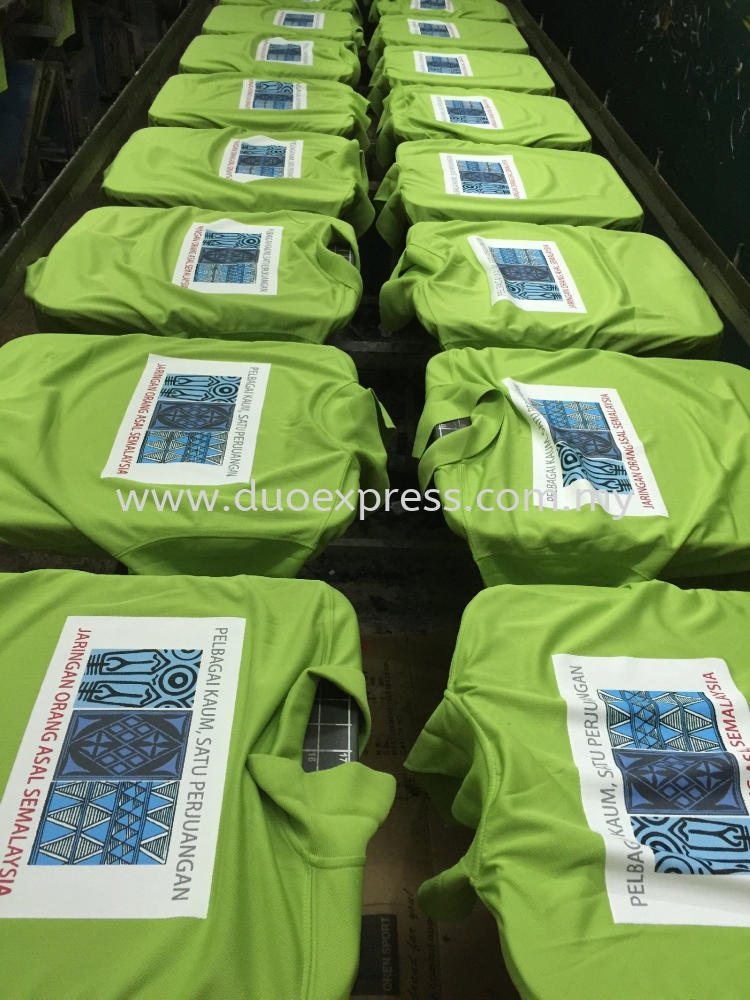
DEALER WELCOME!
HARGA BORONG!!
CASH & CARRY!!!
Pattern:Round Neck,
Material: 100% Cotton 160gsm
Asian Size : S,M,L,XL,2XL,3XL
We also provide service of :
* Embroidery
* Silk Screen
* Heat Press






